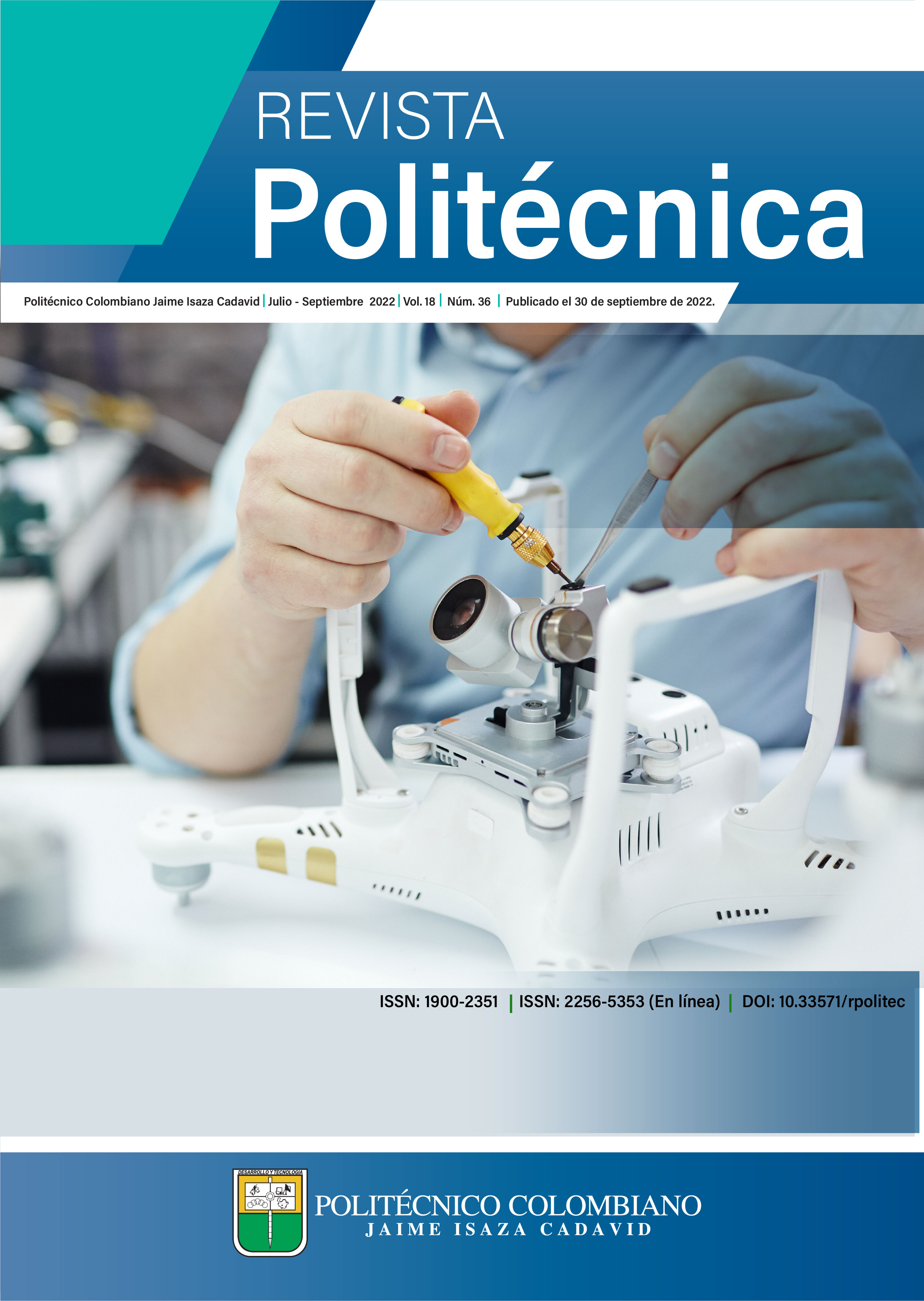Efficiency of Guajiro charcoal and chitosan in the removal of physicochemical parameters in domestic wastewater.
DOI:
https://doi.org/10.33571/rpolitec.v18n36a12Keywords:
Cardón Guajiro, Chitosan, Cactus, Natural coagulant, Sewage waterAbstract
The efficiency of two natural coagulants was evaluated and compared: Cardón Guajiro and Quitosano to treat the wastewater of the Sonesta Valledupar hotel. The Cardón Guajiro was extracted by a process of drying, grinding, sieving and extraction with anhydrous methanol. Chitosan in the form of scales. Jar tests were carried out to determine ranges, optimal doses and analyze the study parameters as these coagulants were applied. Two tests were carried out with concentrations of 5% and 10% for Cardón Guajiro and two for Chitosan at a concentrationf 1%. The doses of Cardón between 10 and 100 PPM in intervals of 10, the doses of Chitosan from 50 to 500 PPM in intervals of 50. The Cardón at a concentration of 5% generated excellent results in the study parameters. Chitosan showed better removal percentages than Cardón guajiro
Article Metrics
Abstract: 380 PDF (Español (España)): 280 HTML (Español (España)): 121PlumX metrics
References
[2] WWDR (2019). Informe Mundial de las Naciones Unidas sobre los Recursos Hídricos. 2019. No dejar a nadie atrás sobre el Desarrollo de los Recursos Hídricos en el Mundo. París, UNESCO. unesdoc.unesco.org/ images/0014/001454/145405E.pdf
[3] IDEAM, (2007). SÓLIDOS SUSPENDIDOS TOTALES EN AGUA SECADOS A 103 – 105 ºC. Recuperado de http://www.ideam.gov.co/documents/14691/38155/S%C3%B3lidos+Suspendidos+Totales+en+aguas.pdf/f02b4c7f-5b8b-4b0a-803a-1958aac1179c.
[4] IDEAM, (2007). DEMANDA BIOQUÌMICA DE OXÌGENO 5 días, INCUBACIÒN Y ELECTROMETRÌA 103 – 105 ºC. Recuperado de http://www.ideam.gov.co/documents/14691/38155/Demanda+Bioqu%C3%ADmica+de+Ox%C3%ADgeno..pdf/ca6e1594-4217-4aa3-9627-d60e5c077dfa.
[5] IDEAM, (2007). DEMANDA QUÌMICA DE OXÌGENO POR REFLUJO CERRADO Y VOLUMETRIA. Recuperado de http://www.ideam.gov.co/documents/14691/38155/Demanda+Qu%C3%ADmica+de+Ox%C3%ADgeno..pdf/20030922-4f81-4e8f-841c-c124b9ab5adb
[6]IDEAM, (2007). TURBIEDAD POR NEFELOMETRÍA (METODO B). Recuperado de http://www.ideam.gov.co/documents/14691/38155/Turbiedad+por+Nefelometr%C3%ADa..pdf/fc92342e-8bba-4098-9310-56461c6a6dbc.
[7] IDEAM, (2007). pH EN AGUA POR ELECTROMETRIA. Recuperado de http://www.ideam.gov.co/documents/14691/38155/pH+en+agua+por+Electrometr%C3%ADa.pdf/ec53b64e-91eb-44c1-befe-41fcfccdfff1
[8] Dearmas Duarte, D., & Ramírez Hernández, L. F. (2015). Remoción de nutrientes mediante coagulantes naturales y químicos en planta de tratamiento de aguas residuales, Valledupar Colombia. Revista De Investigación Agraria Y Ambiental, 6(2), 183 - 196. Recuperado de https://doi.org/10.22490/21456453.1415
[9] Calderón y Mendieta. (2018). Evaluación de la eficiencia del stenocereus griseus como coagulante natural, en el tratamiento de aguas residuales de la empresa lácteos del Cesar S.A (KLAREN´S), en la ciudad de Valledupar
[10] Amaro, A. (2015). Instrumentación Básica de una EDARU. Recuperado de https://core.ac.uk/download/pdf/288499011.pdf
[11]Lozano, W., (2012). Fundamentos de diseños de plantas depuradoras de aguas residuales. Recuperado de: https://www.researchgate.net/publication/298354134_Diseno_de_Plantas_de_Tratamiento_de_Aguas_Residuales
[12] Carmona, (2017). Análisis de las fracciones de DQO en las aguas de la planta de tratamiento de aguas residuales (PTAR). Recuperado de https://repository.unad.edu.co/bitstream/handle/10596/12223/98494403.pdf;jsessionid=80EED85B19D27360EF20B7E63465C35C.jvm1?sequence=1
Published
How to Cite
Issue
Section
License
Copyright (c) 2022 Karina Paola Torres-Cervera, Marlon David Macea-Triana, Linda Lucía Rojas-Sanmiguel, Yim James Rodriguez, Luis Alberto Romero-Benjumea, Aleana Cahuana, Melisa Martínez Maestre

This work is licensed under a Creative Commons Attribution-NonCommercial-ShareAlike 4.0 International License.

























